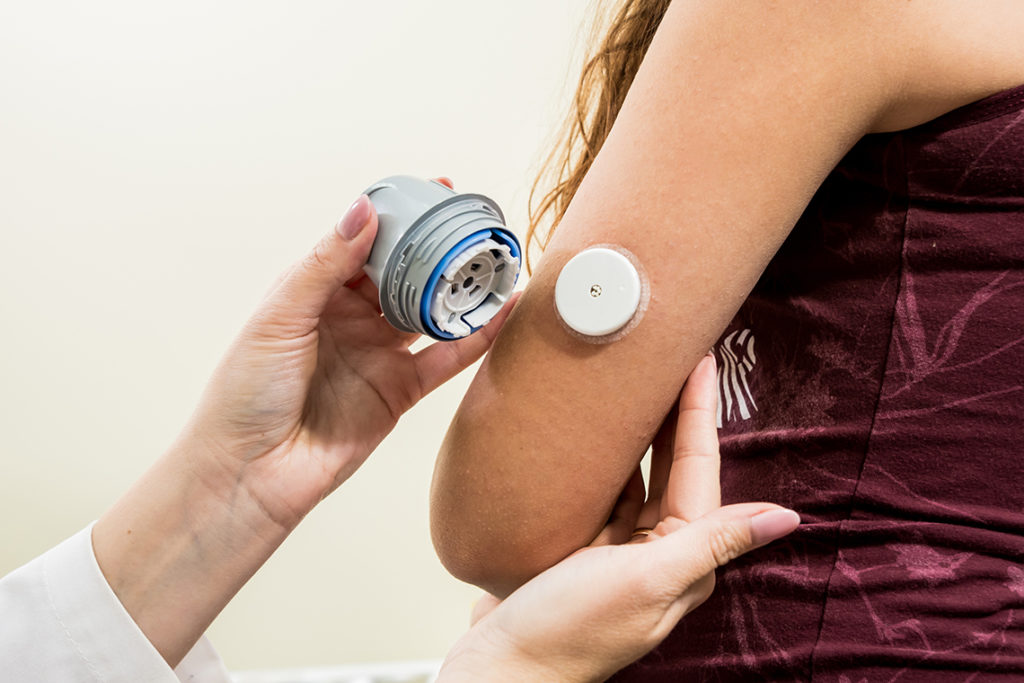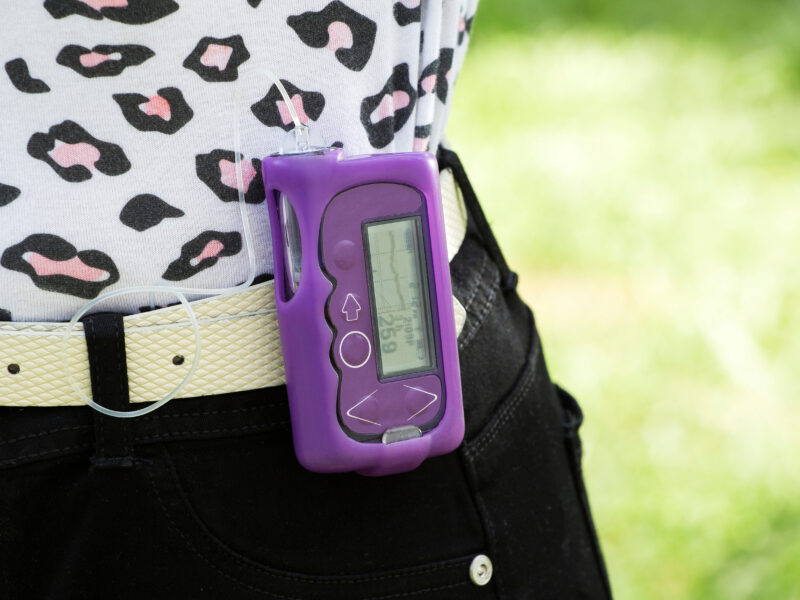Comprehensive Type 1 Diabetes Wellness Score to Help Patients and Providers
Comprehensive Type 1 Diabetes Wellness Score to Help Patients and Providers https://pediatricsnationwide.org/wp-content/uploads/2020/10/AdobeStock_313527520_for-Web-1024x683.jpg 1024 683 Katie Brind'Amour, PhD, MS, CHES Katie Brind'Amour, PhD, MS, CHES https://pediatricsnationwide.org/wp-content/uploads/2021/03/Katie-B-portrait.gif- October 12, 2020
- Katie Brind'Amour, PhD, MS, CHES

A quality improvement effort resulted in the first-known composite score to track multiple clinical indicators of diabetes-related health in patients with Type 1.
Despite the traditional use of hemoglobin A1c (HbA1c) as the standard metric for diabetes control, it has its shortcomings, such as an incomplete picture of blood sugar variability and hypoglycemia risk. To gain a more holistic sense of the quality of diabetes management, both for patient outcomes and for a clinic’s success in treating the patient effectively, the endocrinology team at Nationwide Children’s Hospital developed the first-ever Type 1 Diabetes Composite Score: a broad metric comprised of numerous lab test results and risk indicators.
“HbA1c is important, but it’s not the end all, be all for capturing life with diabetes,” says Justin Indyk, MD, PhD, pediatric endocrinologist at Nationwide Children’s and lead author on the publication detailing the team’s quality improvement (QI) initiative to create the score. “We can make anyone’s HbA1c lower — simply double or triple their insulin — but that leads to greater hypoglycemia risks and parents lying awake at night worrying about their child developing a scary low blood sugar. We wanted to find a better way to capture how a patient is doing in a global sense.”
Dr. Indyk and the QI team compiled key diabetes surveillance measures recommended by the American Diabetes Association and the International Society for Pediatric and Adolescent Diabetes, including blood pressure, urine screening and lipid profiles and added other known outcomes-related factors, such as wellness visit attendance, hypoglycemia and hospitalization episodes, use of continuous glucose monitoring (CGM) devices and more. The new process- and outcomes-driven composite measure includes nine components and has a scoring system of 0 to 18, with higher numbers representing better diabetes management.
“We want kids and parents to recognize and appreciate how they are doing with diabetes on a more holistic level than just HbA1c, and this first iteration of a global diabetes score was put together as an attempt to allow that,” says Dr. Indyk, who is also an assistant professor of Clinical Pediatrics at The Ohio State University College of Medicine. “On the flip side, this also shows us as providers where we need to do better. If patients aren’t regularly getting their tests in clinic so that we can make sure they’re doing well, that’s on us.”
Dr. Indyk and the QI team worked with hospital information science experts to build a diabetes registry for the clinic in 2017. This patient registry, which now includes more than 1,900 patients, was then used to develop the framework and clinician “dashboard” showing patient- and population-level T1DCS data. The team tested the scoring tool in 2018 and continued applying it clinic-wide using periodic assessments of 2019 data. Since implementing the T1DCS as a tool in the electronic medical record system, the clinic has tracked steady improvements in population-level scores driven, they believe, by visibility of these metrics as well as a push for increased CGM use and patient-specific education.
“The tool opens up a lot of opportunities for demographic analysis, score-driven patient education interventions and identification of future clinic QI initiatives,” says Dr. Indyk.
In addition, hospital and community clinicians have already started to use the data to identify which school-based diabetes education programs may need the most attention, based on the zip code-associated scores from the tool.
“We are optimistic that it will really help us find and address health disparities and inequities,” he adds.
While the practicality of broad use of the composite score depends on fairly high-tech integration with a clinic’s electronic records system, Dr. Indyk is hopeful that, if proven to be a valuable tool compared to HbA1c alone, future iterations of standard EMR programs could be built with this module included. He also believes elements can also be adopted on a smaller, less computer-driven scale.
“Really, it could be as simple as a wallet card, where you write down your blood pressure and urine and lipid results each time they are measured, and track those — together with HbA1c and some of the tool’s other elements — over time,” says Dr. Indyk, who also notes the importance of framing the score as more of a “report” for families than a “grade,” to be sensitive to some people’s aversion to scores or assessments as a label, by delving into the specific contributing factors that can be addressed. “The point is to get to that understanding that there’s more to life with diabetes than just one number.”
Reference:
Indyk JA, Buckingham D, Obrynba KS, Servick C, Gandhi KK, Kramer A, Kamboj MK. The Type 1 Diabetes Composite Score: An innovative metric for measuring patient care outcomes beyond HbA1c. Pediatric Quality and Safety. 2020 Sep-Oct; 5(5): e354.
Image credit: Adobe Stock
About the author
Katherine (Katie) Brind’Amour is a freelance medical and health science writer based in Pennsylvania. She has written about nearly every therapeutic area for patients, doctors and the general public. Dr. Brind’Amour specializes in health literacy and patient education. She completed her BS and MS degrees in Biology at Arizona State University and her PhD in Health Services Management and Policy at The Ohio State University. She is a Certified Health Education Specialist and is interested in health promotion via health programs and the communication of medical information.
-
Katie Brind'Amour, PhD, MS, CHEShttps://pediatricsnationwide.org/author/katie-brindamour-phd-ms-ches/April 27, 2014
-
Katie Brind'Amour, PhD, MS, CHEShttps://pediatricsnationwide.org/author/katie-brindamour-phd-ms-ches/April 27, 2014
-
Katie Brind'Amour, PhD, MS, CHEShttps://pediatricsnationwide.org/author/katie-brindamour-phd-ms-ches/April 27, 2014
-
Katie Brind'Amour, PhD, MS, CHEShttps://pediatricsnationwide.org/author/katie-brindamour-phd-ms-ches/April 28, 2014
- Post Tags:
- Diabetes
- Endocrinology
- Quality Improvement
- Posted In:
- In Brief







